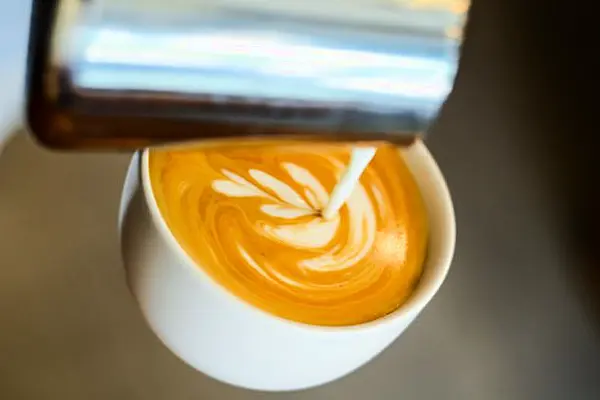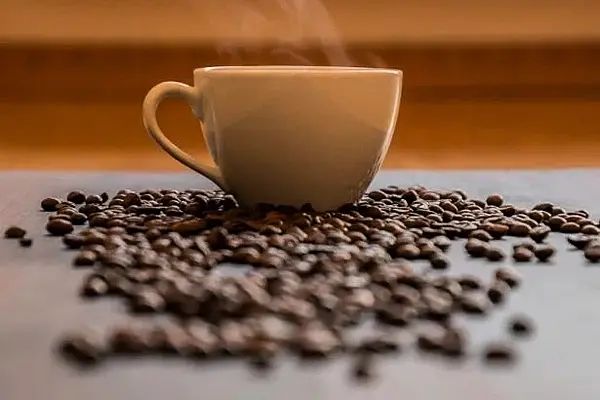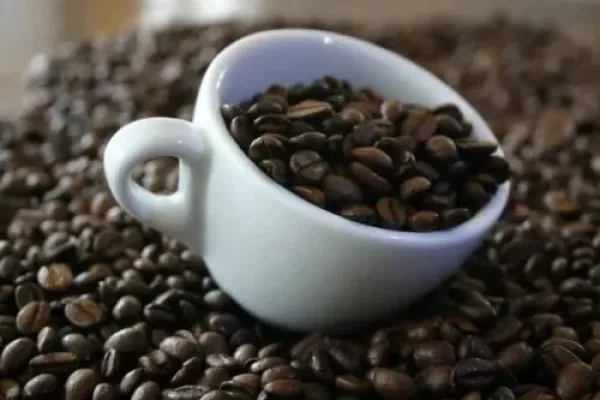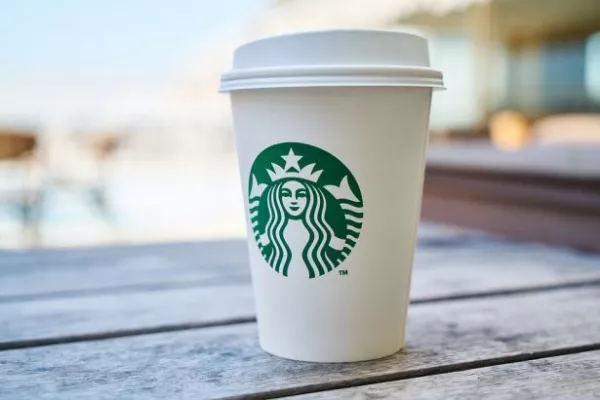Increased sales, changing attitudes and innumerable health discoveries – 2015 was a remarkable year for coffee-lovers. John Golden speaks to Ailbhe Byrne of the Irish Coffee Council about the Irish coffee market, and to Alan Andrews of Coffee Culture about the rise of speciality coffee.
**************************************************************************************************************************************
In drinks news, coffee has dominated the headlines in the last year. From near- daily scientific discoveries of its health benefits to record-breaking sales, to cup- related controversies, 2015 was the Year of the Java.
In Ireland, our reputation as a tea-drinking nation is not without merit, however, the amounts we consume in both the retail and foodservice sectors show that we now have a thriving coffee culture that has an identity all of its own.
“Irish consumers are increasingly inquisitive when it comes to coffee. They are looking to experiment, try out new bean types, flavours and brewing techniques,” Ailbhe Byrne of the Irish Coffee Council (CoffeeCouncil.ie) told Hospitality Ireland. The ICC is part of the Irish business representative network Ibec. It represents the coffee industry in Ireland in all matters relating to the growth, manufacture, distribution and consumption of coffee.
“It’s an exciting time for coffee in Ireland. Whether it’s instant, espresso or filter, the Irish people are embracing coffee like never before. With rising consumer confidence and more people back in work, we’re finding people are drinking more coffee, and we expect this to continue to rise in 2016,” says Byrne.
The statistics back up the claim. In 2014, 4,558 tonnes of coffee were consumed in Ireland, up from 4,242 in 2013 – a 7.5-per- cent increase. Since 2009, total volume sales have increased by 15 per cent – a huge jump that most FMCG markets would love to boast. Retail sales for 2015 are predicted to be worth €90.7 million for all coffee types.
Research by the ICC shows that three quarters of Irish people drink coffee. Some 83 per cent of coffee-shop visitors drink coffee at least once a month, and 62 per cent widely accepted socially. “When people speak about a coffee revolution, it’s less about the volume of coffee that is being consumed and more the cultural or psychological aspect.”
As coffee becomes more popular, consumers become more discerning, and suppliers have reacted accordingly, says Byrne.
“The sector is always introducing innovative new products to satisfy consumer needs and changing taste preferences. In Ireland, soluble coffee remains extremely popular, and therefore, a range of new products have been launched in recent years that bring together that roast and ground taste with the convenience of making an instant coffee.”
While a cup of instant coffee has its obvious advantages for people in a hurry, many don’t want to sacrifice on quality, and the industry has reacted with great aplomb. One need only take a walk down Duke Street in Dublin and see the two-storey Nespresso boutique to get an idea of how popular high- quality instant has become.
Health Benefits
Apart from increased visibility, in 2015, one major coffee-related theme has been the health benefits with which it is associated.
“Coffee is one of the most extensively researched components in the human diet. New studies are regularly being added to the already large body of scientific research. Taken overall, the research indicates that moderate coffee consumption (three to five cups per day) fits well with a healthy bal- anced diet and active lifestyle,” says Byrne.
While newspapers and publications can be accused of slightly overzealous headlines – coming just short of proclaiming the mysteri- ous black liquid as the elixir of life – it seems not only does coffee taste good and give you a boost, it is actually good for you, too. In 2015 alone, several breakthroughs were made in studies about coffee’s benefits.
In March, a team of researchers in Seoul, South Korea, discovered that people who consume a moderate amount of coffee had the least risk of coronary calcium in their arteries, which causes clots and strokes. The study was based on 25,000 people and seemed to directly contradict previous studies that actually linked coffee to heart disease.
In spring, three separate studies revealed that moderate coffee consumption can pro- tect against breast cancer, liver cancer and melanoma. With so many reports coming out about foodstuffs that will give us cancer (red meat, beer, processed foods, toast!), it can be reassuring that the stuff we drink before or after these foods might actually be good for us. Further studies showed that cof- fee can delay the effects of Parkinson’s, multi- ple sclerosis and Alzheimer’s.
The ICC has carried out its own research on the matter. “A report was carried out by our partners, ISIC, devoted to the study and disclosure of science related to coffee and health.
The ISIC promote and communicate independent research on coffee and health. Importantly, they rely on scientific studies derived from peer-reviewed scientific journals and other publications. The studies highlight- ed in this report found people who drank more coffee tended to have a lower risk of developing Type 2 diabetes,” says Byrne, adding, “This doesn’t mean drinking more coffee actively reduces your diabetes risk, but still, it’s welcome news and further evidence that moderate coffee consumption fits well with a healthy, balanced diet and can be enjoyed as part of an active lifestyle.”
It’s important to take some of these find- ings with a pinch of salt (although not literal- ly, of course). As is often the case, for these ‘scientific discoveries’, it is important to see the man behind the curtain. A positive study about coffee that is funded by a coffee lobby group may not be too surprising. However, the headlines keep rolling in, and it seems that coffee as a healthy option is the consen- sus now. It is an angle for retailers to consid- er, especially since the energy drink is a tougher sell nowadays. Perhaps coffee adver- tisers can pick up from where Guinness left off with a ‘coffee is good for you’ campaign.
Something Special
With that said, it’s no wonder some people confess that they can’t function without their morning cup. Howard Schultz, chief execu- tive of Starbucks, once said that he “can’t imagine a day without coffee”. Fortunately for him, he doesn’t have to, as Siren (the ‘topless mermaid’ Starbucks logo) can be seen at dozens of locations in Ireland alone.
She’s not without company. Irish-owned cafes like Insomnia and Butlers, as well as other international players like Costa and Caffè Nero, are all jockeying for position in what is becoming an increasingly crowded market. While the chains rule the roost in Ireland, the independent coffee scene is bur- geoning and having a positive effect on the coffee sector as a whole.
Bord Bia’s Irish Foodservice Channel Insights highlights the increased awareness around these different approaches to coffee- making. ‘Premiumisation for coffees is also a key trend within the channel and is driven by higher consumer awareness of different brew- ing techniques, such as filter and French press. Examples of this trend include a selec- tion of “Third Wave” coffee outlets in Dublin and elsewhere,’ reads the report.
It’s these third-wave outlets that many believe to be the driving force in foodservice coffee sales, which have had a similar trajectory in Ireland to the craft-beer scene, crop- ping up everywhere.
The Speciality Coffee Association of America (SCAA) and the Speciality Coffee Association of Europe (SCAE) are trade associations that extol the virtues of specialty coffee, an industry-defined term that equates high-grade coffee to other artisan products, like wine and specialty food. According to the SCAA’s definition, the term ‘specialty cof- fee’ refers to ‘the highest-quality green coffee beans roasted to their greatest flavour poten- tial by true craftspeople and then properly brewed to well-established SCAA developed standards. Specialty coffee in the green-bean state can be defined as a coffee that has no defects and has a distinctive character in the cup, with a score of 80 or above when grad- ed according to SCAA Standards.’
Alan Andrews, CEO of Coffee Culture (CoffeeCulture.ie), is a proponent of the speciality movement. Coffee Culture is a dedicated training academy for baristas, cafe owners and managers. He is also the national coordinator for the SCAE in Ireland. It’s fair to say he knows his arabica from his robusta.
Andrews told Hospitality Ireland what major changes he has noticed in the last year or so. “I think the whole market has moved. With regards to the people who are in the market selling coffee, [they] have become more educated. On the global scale, you have the SCAE and the SCAA driving knowledge and passion. Back in 2010 and 2011, Bord Bia started encouraging artisan products at the depth of recession. This has created a host of entrepreneurs in roasting coffee and other things, like craft beer, speciality food, anything. That impetus that Bord Bia drove back then helped all these parts of the cake come together. Educated baristas create interest from the consumer as well. As the baristas at the coffee houses become more knowledgable, they drive the consumers to know more, and because it’s such a commodity and so accessible at every level, people can engage with it.”
The rise of craft beer came from not only a desire for different quality and flavours, but also from a change in the way people interact with it. Andrews is hesitant to equate their successes, but sees the similarity in the way people engage with it as a product.
“There is a similarity with those kind of products. The difference is, with the craft beer, you have a multitude of offerings. In a pub, you can have dozens of different beers on tap, whereas with coffee, generally, it’s only the one. That creates a big challenge for retailers – imagine having a craft-beer pub that only has one beer that you can pour two different ways!”
However, he adds that the subculture created around the products is encouraging. “We’re becoming more of a cafe society now, a social society, and it’s a complete knock-on effect from anti-smoking and drink-driving laws. It’s pulling people out of the pubs and getting them into daytime or early-evening socialising. I think our culture as a nation is moving more into that foodie area. We’re taking the Guinness hat off now and becoming more of a food and artisan island.”
Andrews is also quick to dismiss the notion that in the cafe sector it’s a case of ‘chains vs independents’ and only one will remain standing. Like the restaurant sector, there is room for all scales of offerings, and each targets different consumers, according to what they’re looking for. “I think it’s mis- understood. I think that’s the problem there,” he says. “What you do have now is a variety of offers, all of different styles and qualities, to different target markets.
People go through different cafe phases. When people are in their thirties, they might want to go to an independent cafe because they appreciate the holistic approach, where everything is locally grown, locally sourced and feeding back into the local community, compared to some of the chains, like Starbucks, which has a multitude of brands.
While it might not specifically be going down the artisan route, they’re attracting 21-/22-year-olds out of pubs look- ing for a cafe [in which] to socialise and hang out. There’s a whole range of offerings now. You can go to Topaz and have a barista make you a coffee at a petrol station!”
The increased offerings and quality are a result of improving conditions in the market. “From 2009 to 2012, the trend was always about price. Businesses just wanted the cheapest offering. They wanted the cheapest possible coffee they could get, just to get people in the door, but now what is happening is you have an understanding [of] value now.”
Businesses as well as consumers are more willing to spend a little more to get the best product. Hospitality businesses have upgrad- ed their equipment, and the interest in becoming a barista is growing, as it is now considered a genuine career path. As such, the technical ability, availability and knowledge are all there, and all available from Irish-based businesses. “There are more and more Irish roasters –
there have always been some – but people didn’t even know they were there. Now there is more of an intention to buy coffee from Irish roasters from new cafes.”
With regards to his own business, the biggest development that Andrews has seen in 2015 is cafe owners taking an increased role in their business. “They now want to manage the product themselves. We’ve just introduced a ‘train the trainer’ course and have always had a barista mentor course. They’re starting to take it more in-house.
“Five years ago, we were penetrating just baristas. They were going in as the skilled person, and the cafe owner was leaning on them to deliver quality coffee, but now you have another layer, where the cafe owners are saying, ‘I want to learn to do that,’ to make sure the staff are doing it right. They can now create their own standards.”
As for coffee trends in 2016, everyone seems to have an opinion. In the retail market, coffee pods’/capsules’ exponential growth shows no sign of slowing down. Machines were the go-to Black Friday gift, and there will undoubtedly be a lot of coffee machines under Christmas trees this year.
As for the cafe scene, with so many independent shops starting up – which are, in turn, making the big players up their game – we could see all types of offerings creeping onto menus. Cafes are trying out new things that stem from trendsetting cities such as Oslo, Stockholm, Toronto and Berlin.
The acclaimed 3FE cafe just added a water-tasting menu to its offerings, perhaps a harbinger of things to come. One thing that will definitely be happening next year is the World Barista Championship, which Ireland will host in June, in the RDS. It will attract up to 10,000 coffee professionals from over 100 countries around the world to the city for a four-day celebration of coffee, placing Ireland very much on the coffee map.












